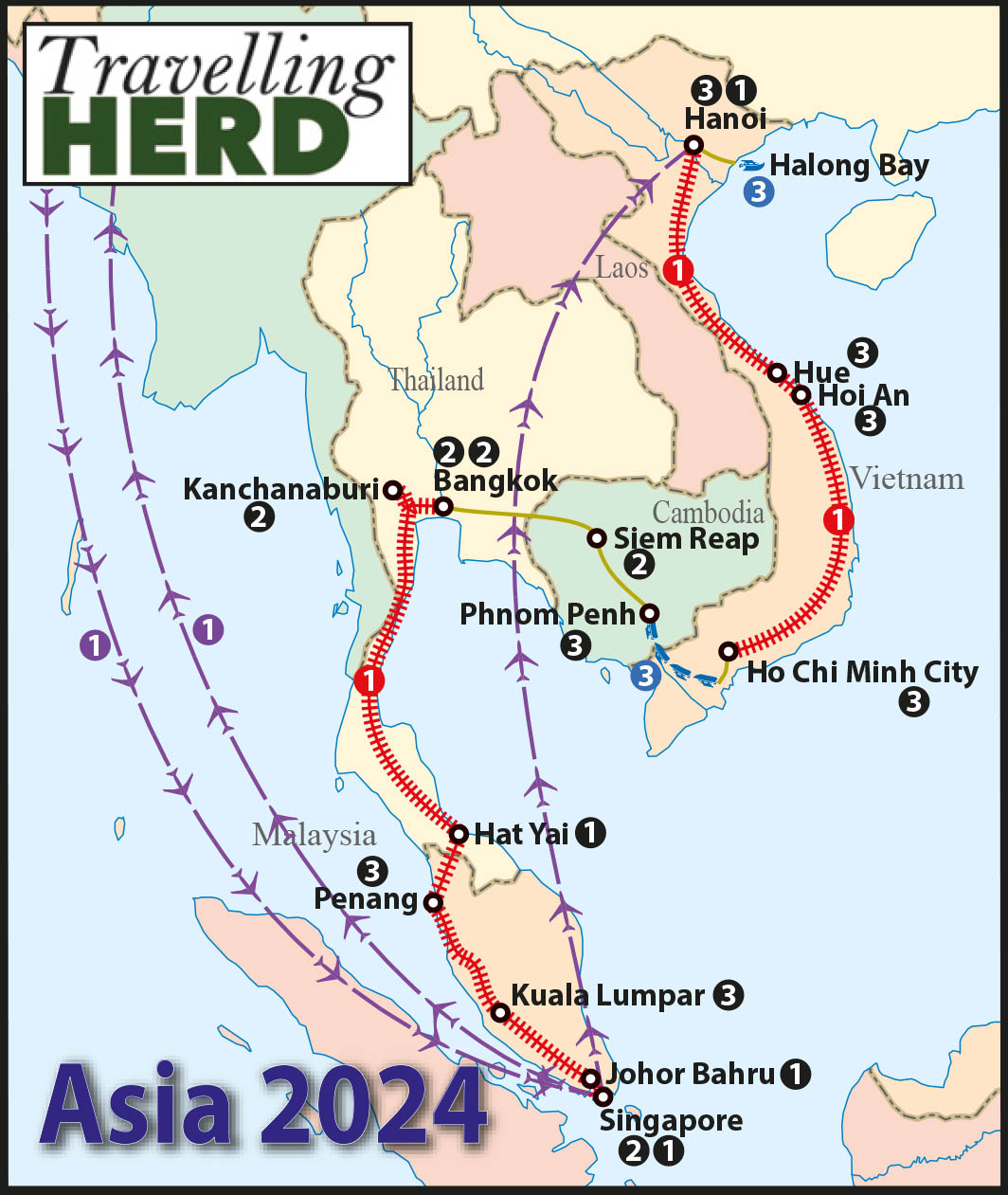Read this blog: The one where we see that Robert remembers the moves
Monday 25th and Tuesday 26th March 2024
On the first morning on board, as we travelled from Cai Be to Con Phuong Island, the ship’s masseuse offered everyone a five minute neck and shoulder massage as a loss leader to encourage bookings. Uptake of the free service was brisk and both Robert and Matilda indulged. She certainly found some of Robert’s knots but the prices afloat were predictable much higher than we had seen on land.
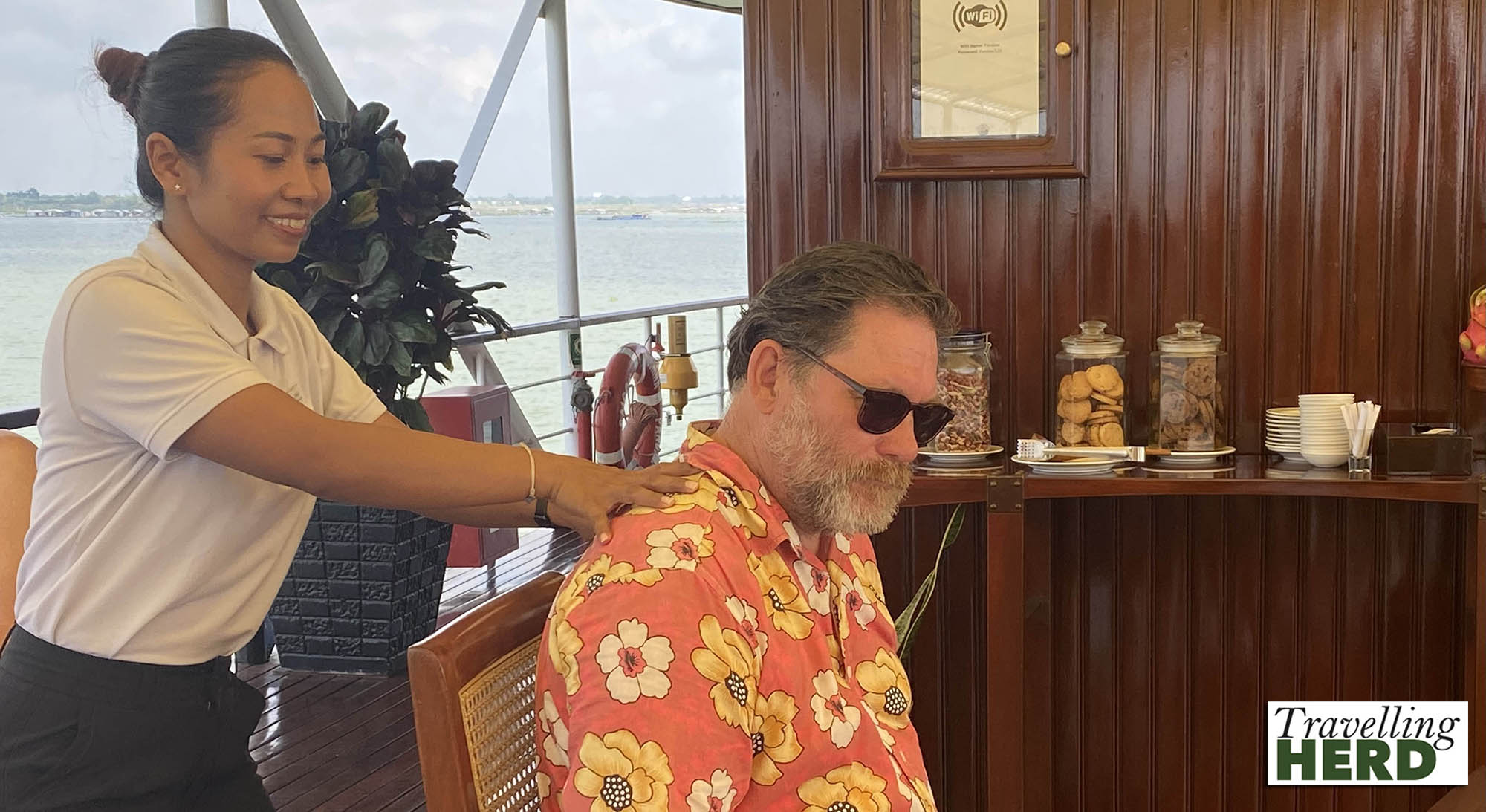
As we cruised further upstream, we passed floating fish farms run by families who lived on the water permanently.

The cargo boats were often so heavily laden that we feared they were close to sinking with the wash running over the bow.

The activity for the day was to visit a bamboo weaving community and a school but we opted to stay on board as the temperatures were set to rise to 36° and Matilda wanted to save her enegery for the 400 steps up to the temple which was scheduled for Day Three.
We moored overnight near Tan Chau and the entertainment that evening was a screening of Good Morning, Vietnam. We preferred to stay on the Sun Deck while the day cooled slightly. Our briefing notes for Day Three forecast temperatures of 39°. As we went to bed that night we noticed that the lights in the ceiling outside each cabin door were surrounded by flying insects. We felt it was possibly a design fault to position them here given the warning we had been given the day before.
On the morning of Day Three we had to breakfast early to leave for a morning excursion to Chau Doc. Once again we boarded sampans which took us past floating communities. The Mekong Delta is effectively a vast fertile flood plain. Further upstream where the land allows, communities are more likely to be organised into villages. But in the lower delta, communities line the banks and waterways. Building these floating or elevated houses near canals keeps more land available for cultivation and also helps to ensure people have ready access to the most common form of transportation in the delta: boats.
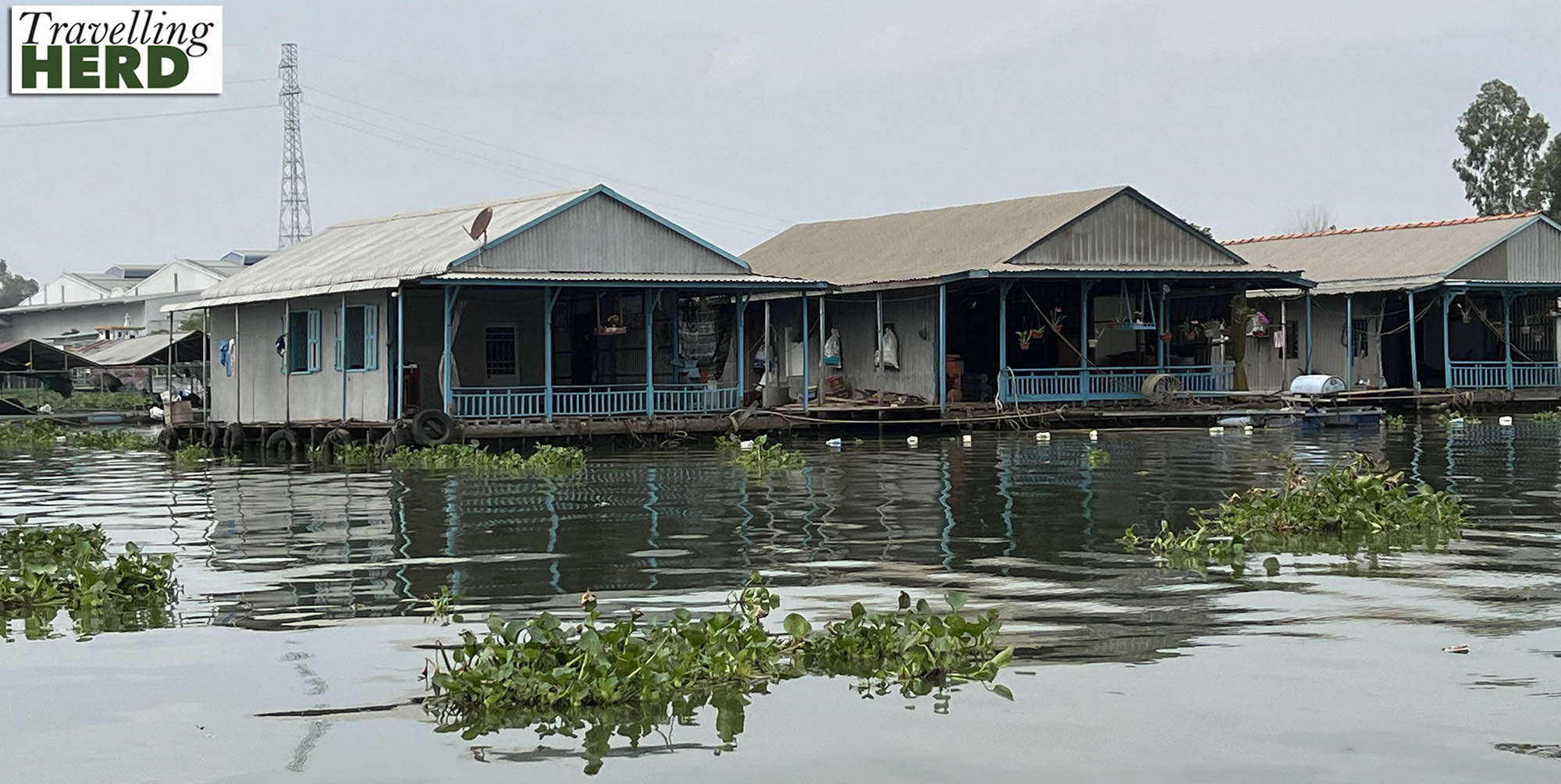
The sampan took us past the western face of Sam Mountain where work is underway to carve an 81m tall meditating Shakyamuni Buddha in the rock face at a former stone quarry. Started in 2015, the head and upper torso are finished but the legs and lotus are yet to be completed. However, our guide told us that the carving had destabilised the rock face and there was some concern that the sculpture might collapse.

We disembarked and a coach took us to the other side of the mountain. As so often happens, some of the most interesting sights pass by too quickly to be captured on camera. As we drove through villages we saw what can best be described as open air “hammock hotels”. Rows of hammocks were strung up in covered shaded areas between shops and could be rented by multiples of an hour. Local workers and pilgrims would often use these as a very cheap alternative to a hotel.
Elsewhere on Sam Mountain is Phuoc Dien Tu or the Hang Pagoda which has been built across several levels on the steep cliff face and includes stupas, temples, open air shrines, a decorative bridge and lily pond as well as other sights. Entry is free. One terrace looking out over the countryside of An Giang has imposing and detailed white statues which are thrown into relief by the lush green foliage and muted brown temple buildings behind.

Matilda particularly liked the statue of a young monk in among the shrubs who looked like he was wearing either sunglasses or motorbike goggles [see feature photo].
Four hundred steps lead upwards but there are several shrines and terraces on the way so it is easy to break the climb into more manageable sections which was very welcome in the heat. The current pagoda dates from 1885 and additions were made in 1937.

The statue of Buddha in this shrine had recently been replaced and the one which was removed can just be seen carefully wrapped to protect it on the left of the photo.
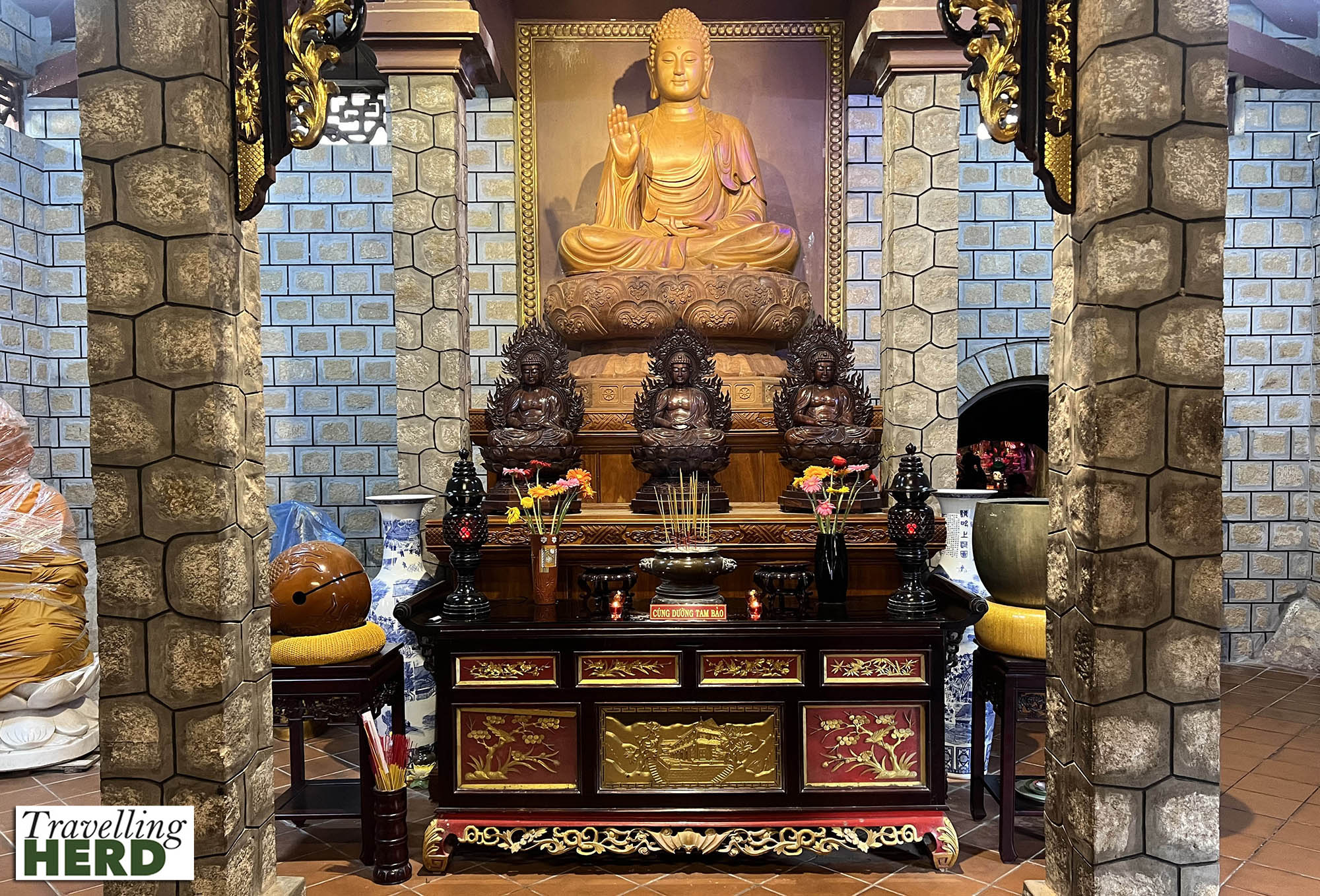
Sam Mountain rises about 284m above sea level and the border with Cambodia is visible in the distance across the rice fields.

We returned to the coach and went to Chau Doc market, which is famous for fish sauce. Robert is disappointed not to have seen any insects for sale yet, but there were many types of dried and live fish on offer, as well as skinned frogs. Matilda was a little distressed to see that one fish had escaped its bowl and was flapping helplessly on the floor.

As we boarded the sampan to visit a fish farm, Matilda spotted a fisherman close to the landing stage. A small section of the boat by his feet between two of the treads was filled with water and a fish he had recently caught, could be seen swimming there. No doubt this was a good way to keep the catch fresh.

The workers at the fish farm lived in brightly coloured buildings above their fishery.

Larger fish are removed to ensure they do not start eating smaller ones but they all seemed to be ravenous.
Although people live close to the water, every few years the houses are lifted and dried out for repairs to ensure they stay watertight.
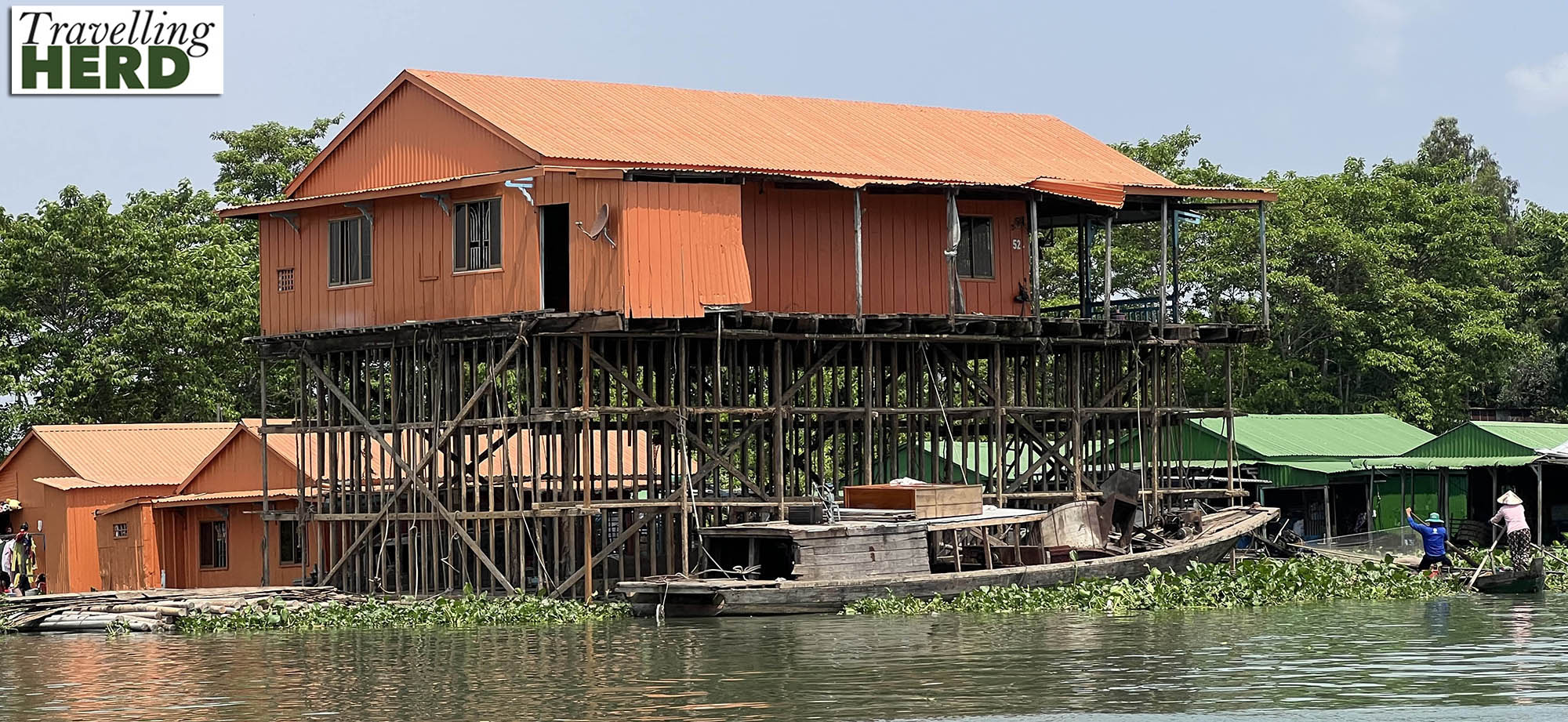
We continued on to a village inhabited by Cham people who observe the Muslim way of life and in the village we visited continue to weave traditional fabrics. As we walked through, workmen were collecting fruit from a tree. We weren’t sure whether this was a harvest or a safety precaution.
We walked on down to watch a traditional Lion dance in the temple.
The Lion Dance is often performed at New Year to bring good luck and drive away everlasting spirits.
It is apparently considered especially good luck to be bitten in the head by the lion.

We returned to the RV Indochina Pandaw in time for lunch and while we ate, we cruised on till we arrived almost at the Cambodian border where we moored up to allow for Pandaw staff to arrange our visa documentation.
To mark the end of the cruise, after the Disembarkation Briefing and the Captain and all the crew who were individually introduced to us, they invited passengers to get up and learn to dance with them Khmer style. The required hand movements looked a lot like a more graceful and delicate Pilates breathing exercise to Matilda. They had clearly judged their audience well as they also played Village People’s YMCA. Robert hasn’t forgotten the moves [see Video of the day, below].
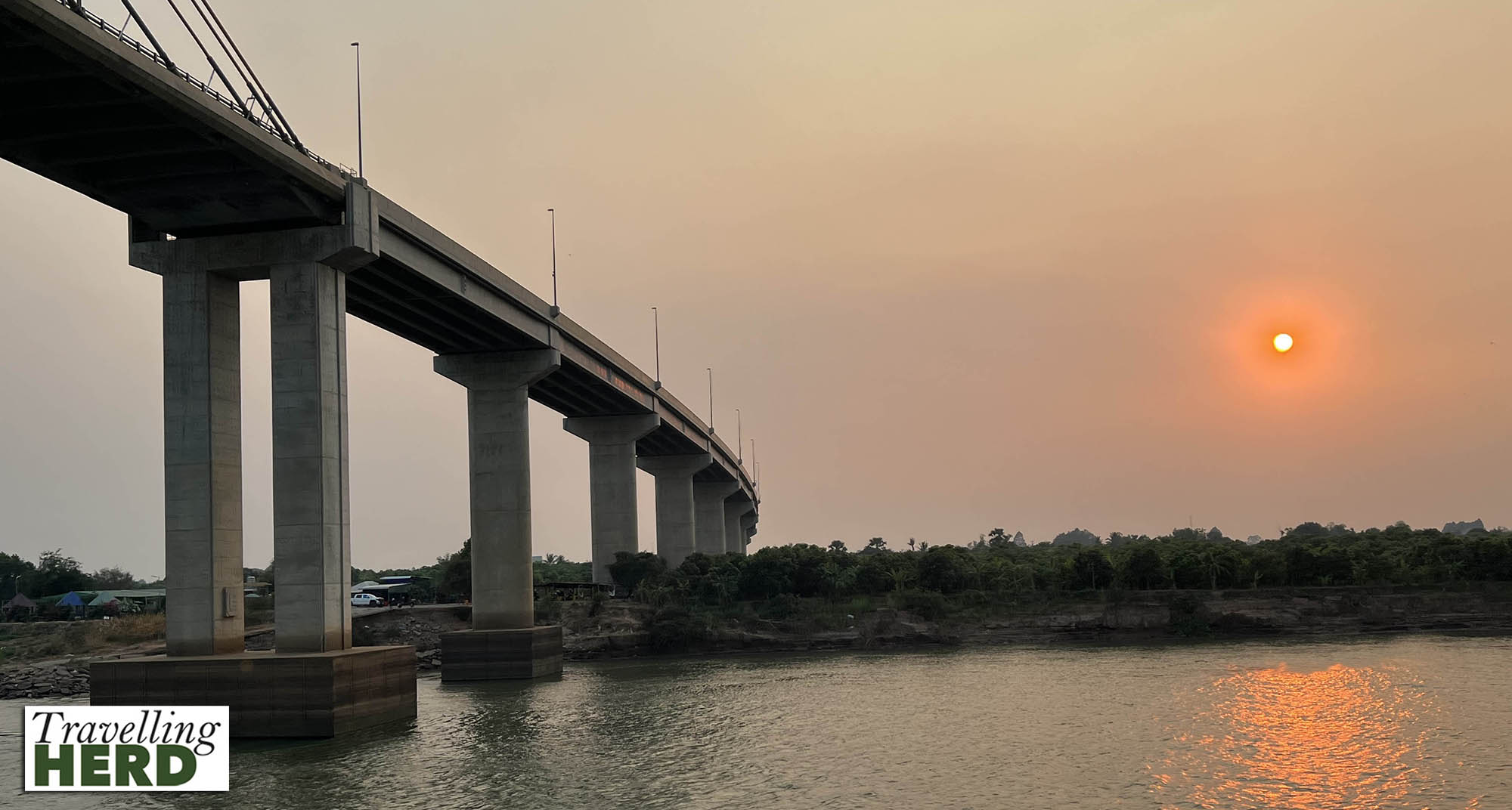
We moored for the night within sight of the lights of Phnom Penh. The movie presentation was The Killing Fields and again we felt it was better to enjoy the evening rather than sit in a movie theatre but we are planning on catching up with some relevant films once we are back in the UK.
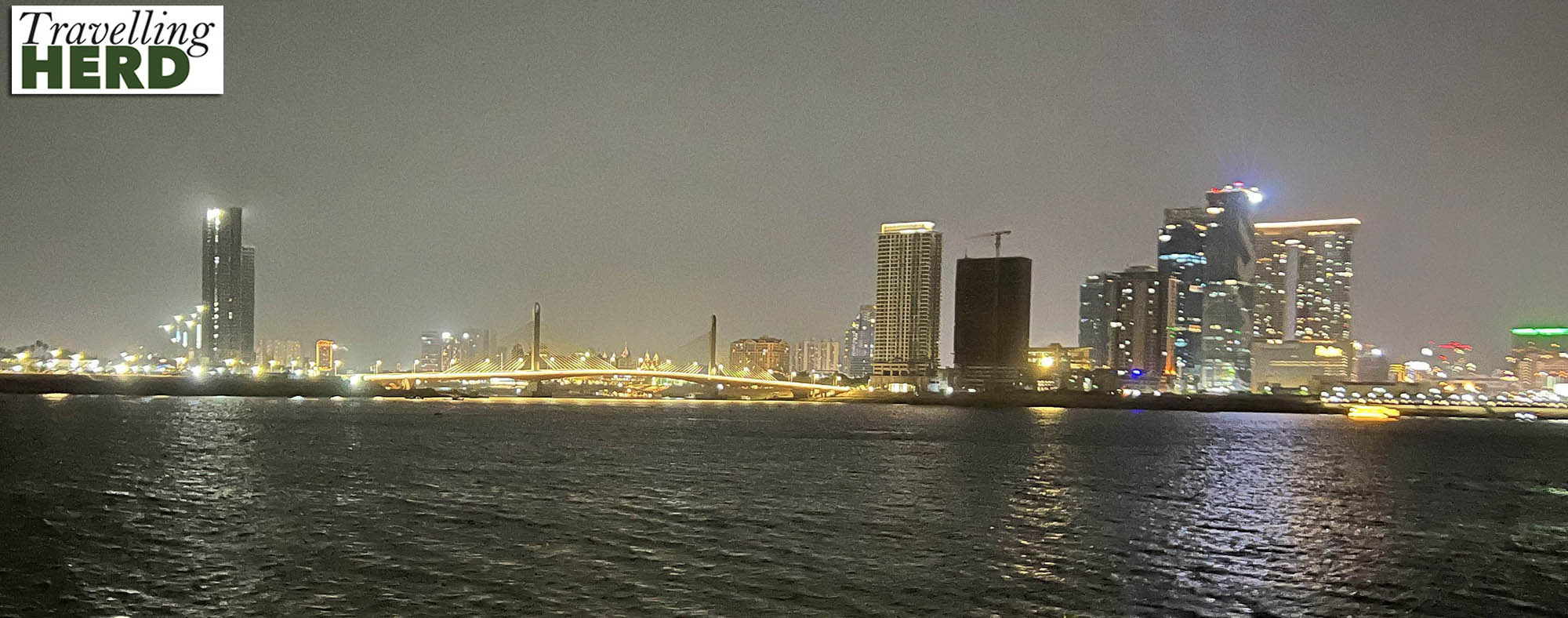
Video of the day:
Selfie of the day:
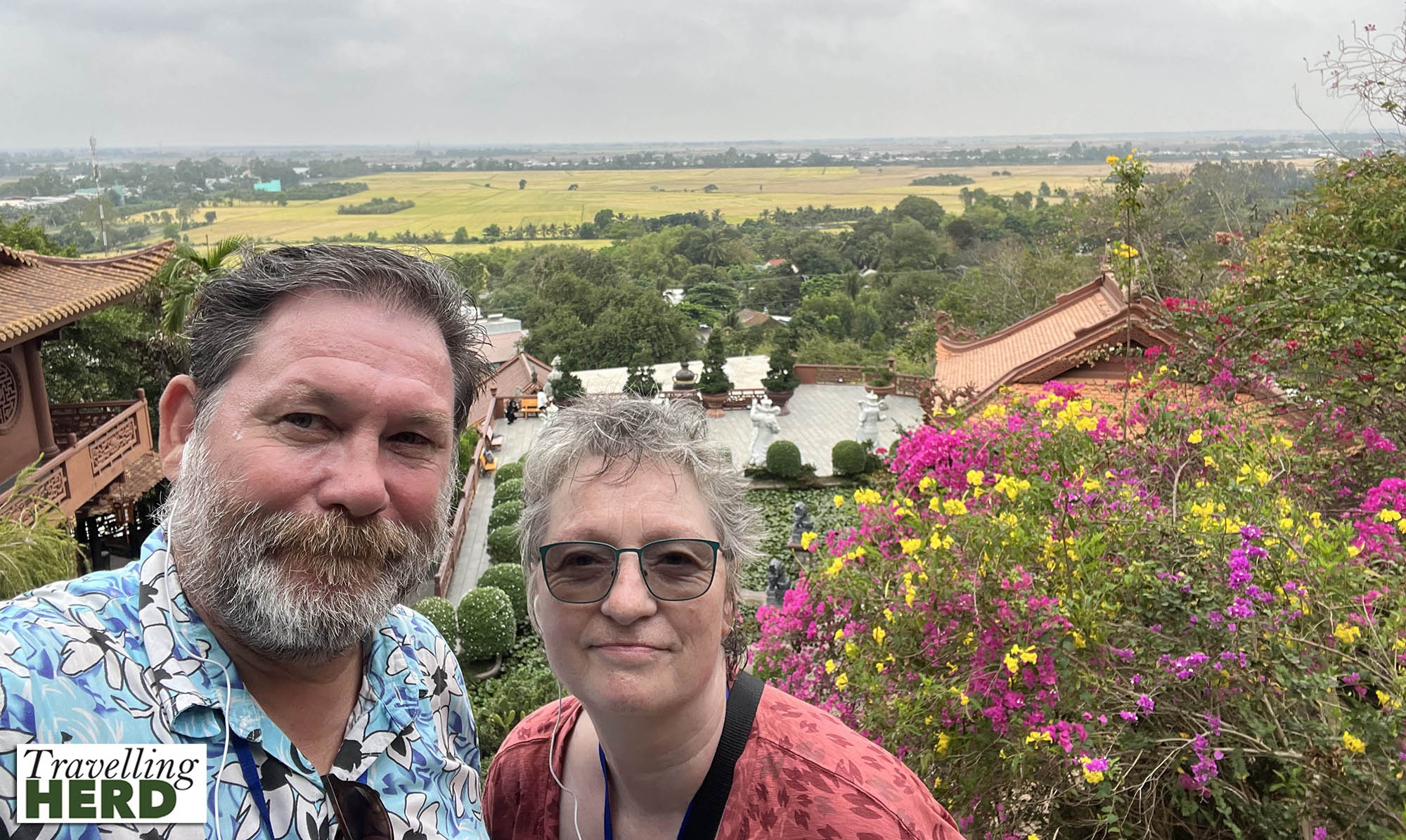
Route Map:
